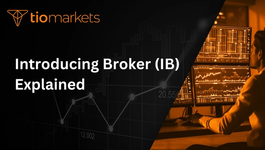Multi-manager investment: Explained
BY TIOmarkets
|August 3, 2024In the world of trading, one of the strategies that has gained popularity over the years is multi-manager investment. This approach, as the name suggests, involves the use of multiple fund managers to oversee different portions of an investment portfolio. The primary goal of this approach is to diversify risk and potentially enhance returns. In this glossary entry, we will delve into the intricacies of multi-manager investment, its benefits, drawbacks, and its relevance in today's trading environment.
Understanding multi-manager investment requires a comprehensive grasp of several key concepts in trading. These include portfolio management, risk diversification, asset allocation, and fund manager selection. Each of these elements plays a crucial role in the multi-manager investment strategy, and we will explore each in detail in the following sections.
Concept of Multi-Manager Investment
At its core, multi-manager investment is a strategy that involves employing multiple fund managers, each with their own area of expertise, to manage different parts of an investment portfolio. This approach is based on the belief that no single manager can be an expert in all asset classes or markets. By leveraging the skills of multiple managers, investors hope to achieve a more balanced and diversified portfolio.
Multi-manager investment can be implemented in various ways. Some investors may choose to hire different managers for different asset classes, while others may divide their portfolio based on geographical regions or investment styles. The choice of how to implement a multi-manager strategy largely depends on the investor's risk tolerance, investment goals, and the available fund managers.
Benefits of Multi-Manager Investment
One of the main benefits of multi-manager investment is risk diversification. By spreading investments across different asset classes, geographical regions, or investment styles, investors can reduce the risk of significant losses if one area performs poorly. This is particularly beneficial in volatile markets, where certain asset classes or regions may experience significant fluctuations.
Another benefit is access to specialized expertise. Each fund manager in a multi-manager investment strategy brings their own unique skills and knowledge to the table. This can lead to better investment decisions and potentially higher returns. Additionally, having multiple managers can provide a level of redundancy, ensuring that the portfolio continues to be managed effectively even if one manager underperforms or leaves.
Drawbacks of Multi-Manager Investment
Despite its benefits, multi-manager investment is not without its drawbacks. One of the main challenges is the potential for higher costs. Hiring multiple fund managers can lead to higher management fees, which can eat into the portfolio's returns. Additionally, coordinating multiple managers can be complex and time-consuming, requiring a significant amount of oversight and administration.
Another potential drawback is the risk of over-diversification. While diversification is generally a good strategy, there is a point at which it can become counterproductive. If a portfolio is spread too thinly across too many asset classes or regions, it may dilute potential returns and make it difficult to achieve investment goals.
Key Concepts in Multi-Manager Investment
Understanding multi-manager investment requires a grasp of several key concepts. These include portfolio management, risk diversification, asset allocation, and fund manager selection. Each of these elements plays a crucial role in the multi-manager investment strategy.
Portfolio management involves the selection, monitoring, and control of investments in a portfolio, with the aim of achieving the investor's financial goals. Risk diversification is a strategy that involves spreading investments across various assets or markets to reduce risk. Asset allocation is the process of dividing an investment portfolio among different asset categories, such as stocks, bonds, and cash. Fund manager selection involves choosing the right managers to oversee different parts of the portfolio, based on their skills, experience, and performance record.
Portfolio Management
In a multi-manager investment strategy, portfolio management is typically divided among several fund managers. Each manager is responsible for a specific part of the portfolio, based on their area of expertise. This can lead to a more balanced and diversified portfolio, as each manager brings their own unique skills and knowledge to the table.
Effective portfolio management in a multi-manager investment strategy requires careful coordination and oversight. The investor or an appointed overseer must ensure that each manager is performing their role effectively and that the overall portfolio is achieving its intended goals. This can involve regular performance reviews and adjustments to the portfolio as necessary.
Risk Diversification
Risk diversification is a key element of multi-manager investment. By spreading investments across different asset classes, geographical regions, or investment styles, investors can reduce the risk of significant losses if one area performs poorly. This is particularly beneficial in volatile markets, where certain asset classes or regions may experience significant fluctuations.
However, risk diversification in a multi-manager investment strategy must be carefully managed. Over-diversification can dilute potential returns and make it difficult to achieve investment goals. Therefore, while diversification is important, it should not be pursued at the expense of potential returns.
Asset Allocation
Asset allocation is another crucial aspect of multi-manager investment. The way an investment portfolio is divided among different asset categories can significantly impact its risk and return characteristics. Therefore, choosing the right asset allocation is a key decision in a multi-manager investment strategy.
The choice of asset allocation in a multi-manager investment strategy will depend on several factors, including the investor's risk tolerance, investment goals, and the available fund managers. Some investors may choose to allocate their assets based on the expertise of their chosen managers, while others may base their decision on market conditions or their own investment preferences.
Fund Manager Selection
Choosing the right fund managers is perhaps the most critical aspect of a multi-manager investment strategy. The success of the strategy largely depends on the skills, experience, and performance of the chosen managers. Therefore, fund manager selection should be a careful and thorough process.
When selecting fund managers for a multi-manager investment strategy, investors should consider several factors. These include the manager's track record, their expertise in their chosen asset class or market, their investment style, and their fee structure. Additionally, investors should consider how well the manager's approach fits with their own investment goals and risk tolerance.
Implementing a Multi-Manager Investment Strategy
Implementing a multi-manager investment strategy involves several steps. These include defining the investment goals, choosing the asset allocation, selecting the fund managers, and regularly reviewing and adjusting the portfolio as necessary.
Defining the investment goals is the first step in implementing a multi-manager investment strategy. These goals will guide all subsequent decisions, including the choice of asset allocation and fund managers. Once the goals are defined, the investor can choose the asset allocation that best aligns with these goals. The next step is to select the fund managers who will manage the different parts of the portfolio. This should be a careful and thorough process, considering the factors discussed in the previous section. Finally, the investor should regularly review the portfolio and make adjustments as necessary to ensure it continues to meet its goals.
Defining Investment Goals
Defining the investment goals is the first step in implementing a multi-manager investment strategy. These goals will guide all subsequent decisions, including the choice of asset allocation and fund managers. The goals should be specific, measurable, achievable, relevant, and time-bound (SMART). They should also take into account the investor's risk tolerance and investment horizon.
Once the investment goals are defined, they should be documented and communicated to all involved parties. This includes the chosen fund managers, who should understand the goals and how their performance will be measured against them. The goals should also be regularly reviewed and updated as necessary to reflect changes in the investor's circumstances or market conditions.
Choosing Asset Allocation
Choosing the asset allocation is the next step in implementing a multi-manager investment strategy. The choice of asset allocation will depend on several factors, including the investor's risk tolerance, investment goals, and the available fund managers. The chosen asset allocation should align with the investment goals and provide a balance between risk and return.
Once the asset allocation is chosen, it should be communicated to the chosen fund managers. Each manager should understand their role in the portfolio and how their performance will be measured. The asset allocation should also be regularly reviewed and adjusted as necessary to reflect changes in market conditions or the investor's circumstances.
Selecting Fund Managers
Selecting the fund managers is perhaps the most critical step in implementing a multi-manager investment strategy. The success of the strategy largely depends on the skills, experience, and performance of the chosen managers. Therefore, fund manager selection should be a careful and thorough process.
When selecting fund managers, investors should consider several factors. These include the manager's track record, their expertise in their chosen asset class or market, their investment style, and their fee structure. Additionally, investors should consider how well the manager's approach fits with their own investment goals and risk tolerance. Once the managers are selected, they should be regularly reviewed and replaced if necessary to ensure the portfolio continues to meet its goals.
Conclusion
Multi-manager investment is a complex but potentially rewarding strategy. By leveraging the skills of multiple fund managers, investors can diversify risk and potentially enhance returns. However, this strategy requires careful planning, coordination, and oversight. It also involves higher costs and the risk of over-diversification.
Understanding the key concepts in multi-manager investment, including portfolio management, risk diversification, asset allocation, and fund manager selection, is crucial for implementing this strategy effectively. By grasping these concepts and carefully considering the benefits and drawbacks, investors can make informed decisions about whether multi-manager investment is the right strategy for them.
Ready to Diversify Your Trading Strategy?
At TIOmarkets, we understand the importance of a diversified investment approach. As a top rated forex broker, we offer you the opportunity to trade over 300 instruments across 5 markets, including Forex, indices, stocks, commodities, and futures, all with low fees. Join our community of 170,000+ traders in over 170 countries and access our comprehensive educational resources to sharpen your trading skills. Take the first step towards a sophisticated multi-manager investment strategy by creating a Trading Account with TIOmarkets today.

Risk disclaimer: CFDs are complex instruments and come with a high risk of losing money rapidly due to leverage. You should consider whether you understand how CFDs work and whether you can afford to take the high risk of losing your money. Never deposit more than you are prepared to lose. Professional client’s losses can exceed their deposit. Please see our risk warning policy and seek independent professional advice if you do not fully understand. This information is not directed or intended for distribution to or use by residents of certain countries/jurisdictions including, but not limited to, USA & OFAC. The Company holds the right to alter the aforementioned list of countries at its own discretion.
Join us on social media

Behind every blog post lies the combined experience of the people working at TIOmarkets. We are a team of dedicated industry professionals and financial markets enthusiasts committed to providing you with trading education and financial markets commentary. Our goal is to help empower you with the knowledge you need to trade in the markets effectively.





